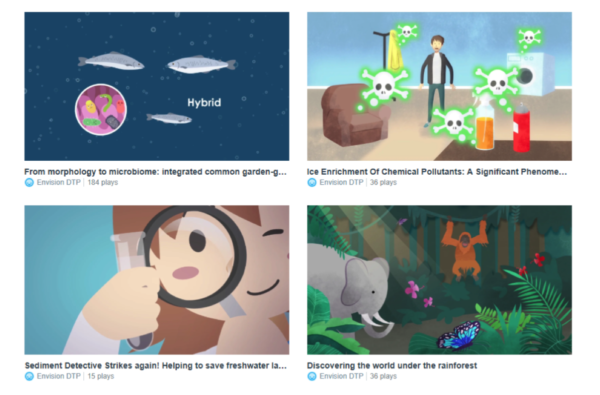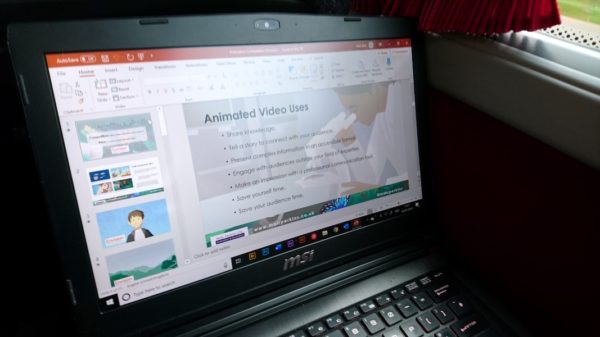In early July 2019 I attended an environmental research conference held at Nottingham University’s Jubilee Campus. This was pretty surreal for me as an animator! I only studied science up to A level, but I’ve always been fascinated by the natural world. This is partly where my passion for conservation and sustainability comes from. Over time I’ve developed an understanding of the complexities and intricacies of ecology and the climate; it’s incredible that so many life forms have evolved over millions of years. It makes me want to do all I can to preserve them and see them flourish. This is why I’m so pleased to be working with Envision; helping environmental science researchers present their research in animation form.
Envision
Envision is an inspiring organisation, bringing together UK researchers with industry partners to equip the next generation of environmental scientists to face the challenges of our modern world. I previously worked with Envision in 2017, creating animations for environmental researchers, to help share their research in an engaging and accessible format, that’s understandable for the general public. I created four animations, which can be viewed here and I received some lovely feedback.

“Mair provided a wealth of imagination and creativity whilst preserving the scientific integrity of the narrative.”
“Mair interpreted the brief for my animation perfectly. It had exactly the right balance of factual information combined with excellent graphics. I am very proud of the final product.”
Following the success of the previous project, I was happy that the Envision team asked me to work on a similar project again this year, and invited me to speak at the Envision Summer Research Conference.
Nottingham University’s Jubilee Campus
The Summer Research Conference was held at the beautiful Nottingham Jubilee Campus; the perfect location given it’s impressive sustainable and environmentally friendly credentials. The campus features a series of lakes, which not only host a variety of wildlife, but also heat and cool the buildings! Other green features include grass and low-growing alpine plant covered roofs for insulation and a biomass boiler.

I spent some time reviewing my slides on the bus journey to the conference.
Animation Competition for PhD Researchers
I’m working with Envision on an animation competition for their PhD students. The researchers will submit a short brief about their work and their vision for the animated film, which will present their work in a more accessible format. I spent my time at the Jubilee Campus explaining the competition and brief, and I emphasised that it would be their project, about their research.
I also highlighted the value and use of animation in scientific research, explained the production process and outlined a schedule to assure the researchers that the process wouldn’t take up much of their time. I’m really looking forward to looking through the researchers briefs and brining their findings to life.

A summary of the key points I presented can be seen below, highlighting the value and uses of animation, the production process and my tips for writing a brief.
Scientific Research Animation
The value and uses of animation:
- Share knowledge.
- Tell a story to connect with your audience.
- Present complex information in an accessible format.
- Engage with audiences outside your field of expertise.
- Make an impression with a professional communication tool.
- Save yourself time.
- Save your audience time.
The production process:
- Submit video brief.
- Ideas and script.
- Style design.
- Sketched storyboards and sketched animated video.
- Illustrated storyboards.

- Professional voiceover.
- Animation and music.

- Video credits.
- Delivery of files (video file and JPEG stills).
Tips For Writing A Brief:
- Consider the purpose and use of your video.
- Who is your audience?
- What are they key messages you want to share with them?
- How do you want the audience to feel after watching?
- What kind of tone and mood do you want the visuals, pacing and voice to convey?
- How can you engage viewers by telling a story? Do you have a particular finding, a question, or a distinctive topic around which the story will unfold?
- Use appropriate and accessible language.
You can learn more about the benefits of scientific research animation and see examples of my previous science animations here. I am always happy to talk about a potential research animation project, so please do get in touch.
